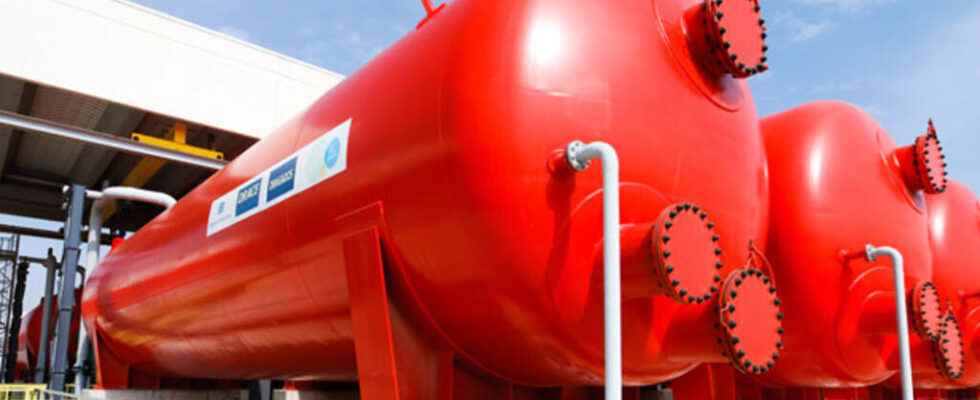Because of the drought and the decline in water resources, some French cities are opting for desalination or seawater desalination units. This system removes salt from the water to make it clean for consumption. On the island of Groix, the system has been installed since the beginning of August for a temporary period of three months.
From the shore of the island of Groix, you can see At sea a raft connected to the desalination units by a thick black pipe. The water is pumped, stored and then brought into two white containers. This is where salt and water are separated by a membrane.
“ The membranes are therefore a physical filtration that allows water to pass on one side while retaining all the particles on the other. These membranes are fragile, and therefore regularly maintaineddescribes Sandrine Delemazure, director of the water and sanitation service of the Agglomeration of Lorient. Throughout the filtration, we check the fouling of the membranes, and when we reach a certain degree of fouling, we can try to clean them, by passing water against the current, or by washing chlorine or chemical washes. »
There is also a thermal process. But both of these techniques have drawbacks: The problem with desalination processes, whether thermal or membrane, is that they both have a strong energy footprint, four to five times greater than any other process for producing drinking water. from any other type of water, and they have such a large environmental footprint, due to the discharges they can project whether they are hypersaline or hot discharges “, explains Nicolas Roche, professor at the University of Aix Marseille.
Desalination plants are very expensive. In Groix, the agglomeration paid 800,000 euros.
